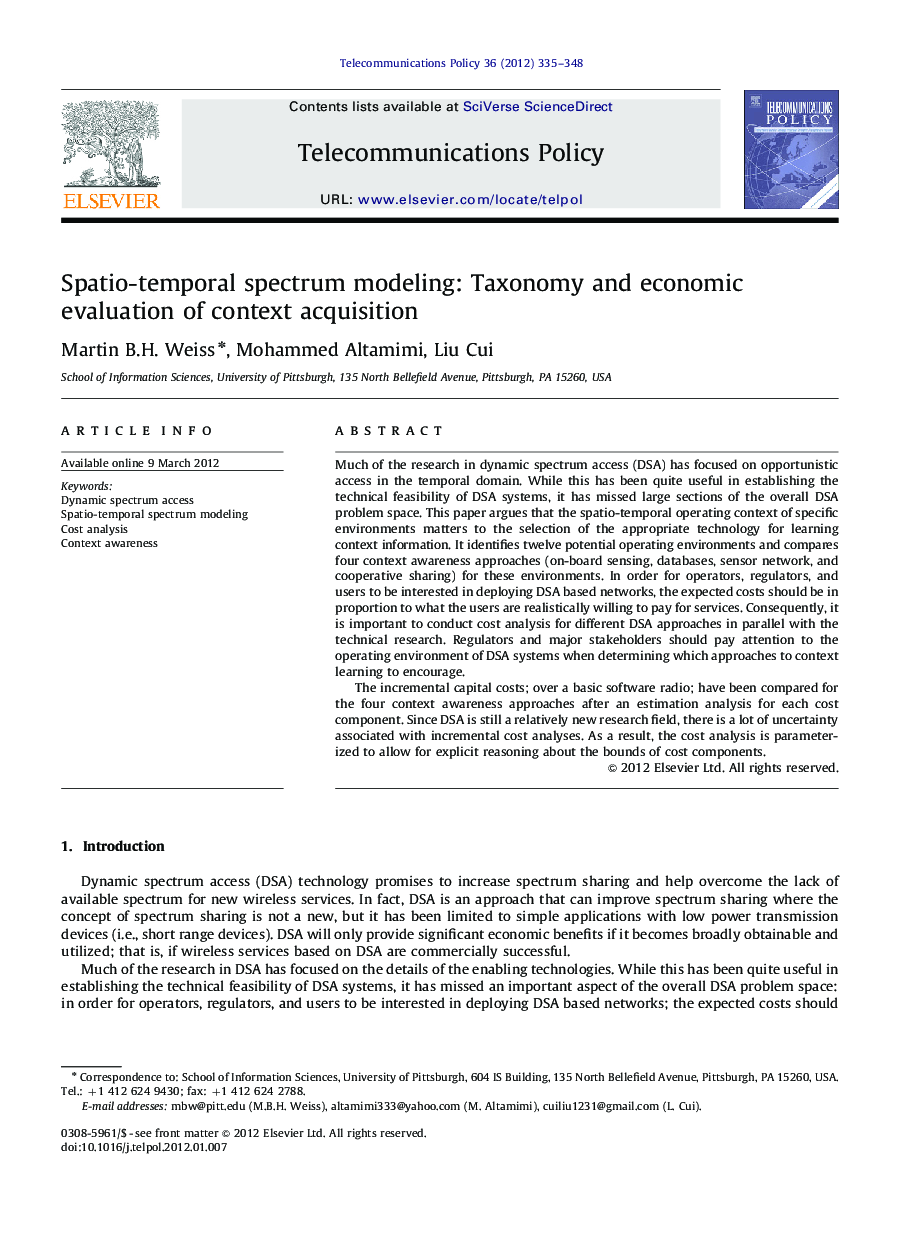| Article ID | Journal | Published Year | Pages | File Type |
|---|---|---|---|---|
| 557359 | Telecommunications Policy | 2012 | 14 Pages |
Much of the research in dynamic spectrum access (DSA) has focused on opportunistic access in the temporal domain. While this has been quite useful in establishing the technical feasibility of DSA systems, it has missed large sections of the overall DSA problem space. This paper argues that the spatio-temporal operating context of specific environments matters to the selection of the appropriate technology for learning context information. It identifies twelve potential operating environments and compares four context awareness approaches (on-board sensing, databases, sensor network, and cooperative sharing) for these environments. In order for operators, regulators, and users to be interested in deploying DSA based networks, the expected costs should be in proportion to what the users are realistically willing to pay for services. Consequently, it is important to conduct cost analysis for different DSA approaches in parallel with the technical research. Regulators and major stakeholders should pay attention to the operating environment of DSA systems when determining which approaches to context learning to encourage.The incremental capital costs; over a basic software radio; have been compared for the four context awareness approaches after an estimation analysis for each cost component. Since DSA is still a relatively new research field, there is a lot of uncertainty associated with incremental cost analyses. As a result, the cost analysis is parameterized to allow for explicit reasoning about the bounds of cost components.
